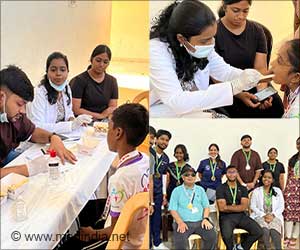
Research from Volk and his colleagues will appear in the December issue of Liver Transplantation, a journal published by Wiley-Blackwell on behalf of the American Association for the Study of Liver Diseases.
As of November 30, the Organ Procurement and Transplantation Network (OPTN) reports that 16,124 candidates are on the waiting list to receive a liver, with only 5,375 deceased donor organs recovered through August. Additionally, there is a large variation in quality of deceased donor livers, which is based on donor characteristics such as age, cause of death, and ischemia time. Previous research has shown that donor characteristics can make the difference between a 20 to 40 percent risk of graft failure by three years following transplantation.
"Organ quality is an important issue for all liver transplant candidates, increasingly so, given the aging donor pool and more frequent use of organs that carry a higher risk of failure," says Volk, who is a hepatology specialist.
"The decision to accept or pass on an organ could mean the difference between life and death for patients with end-stage liver disease. Communication of the risks versus benefits of accepting a 'lower quality' organ is critical, and understanding patient views on the subject is essential for physicians caring for transplant candidates."
For the current study, researchers tested presentation formats for communicating organ quality risks to patients, and factors that might influence patients' willingness to accept higher-risk organs. First, the team conducted interviews with ten patients on the waiting list for liver transplantation to determine their knowledge of organ quality and preferences for accepting organs with greater risk of failure. Based on qualitative information obtained from interviews, the team created a web-based survey which 95 candidates completed.
Advertisement
Women were slightly more accepting of high-risk organs than men. Researchers found that risk tolerance was increased by presenting organ quality as "average quality" rather than "best quality," and by providing feedback about the implications of these preferences on the likelihood of receiving a transplant. Additionally, 83 percent of candidates were found to prefer an equal or dominant role in deciding whether to accept a higher-risk organ. This finding is striking given that, in most transplant centers, patient involvement in these decisions is minimal.
Advertisement
"Furthermore, explaining the intricacies of this topic to sick patients is easier said than done. Our findings offer transplant physicians some useful guidelines for how to council transplant candidates on issues of organ quality."
The authors suggest future studies are needed to develop validated patient education tools that will enhance discussions between physicians and patients in need of liver transplantations.
Source-Eurekalert








